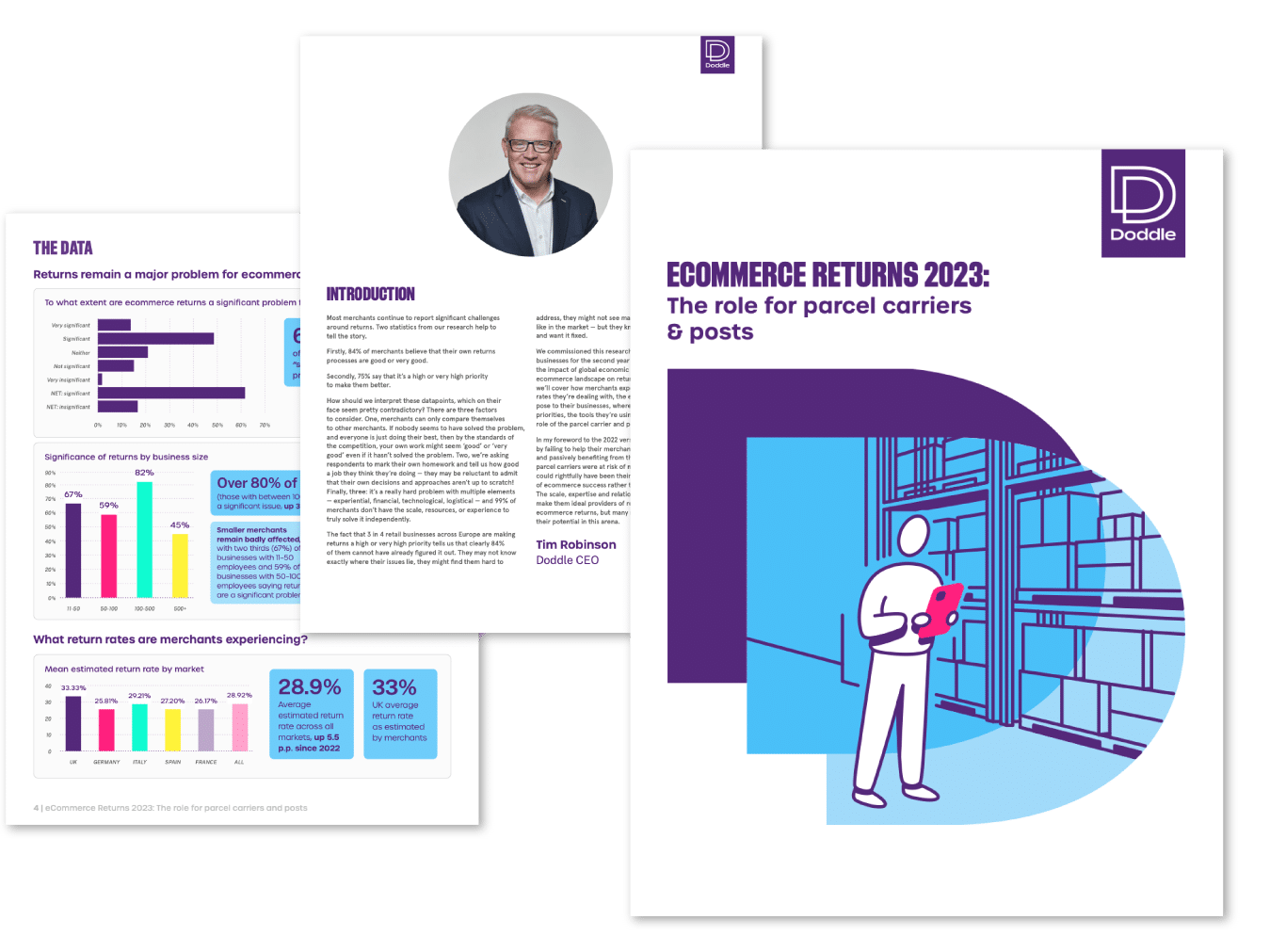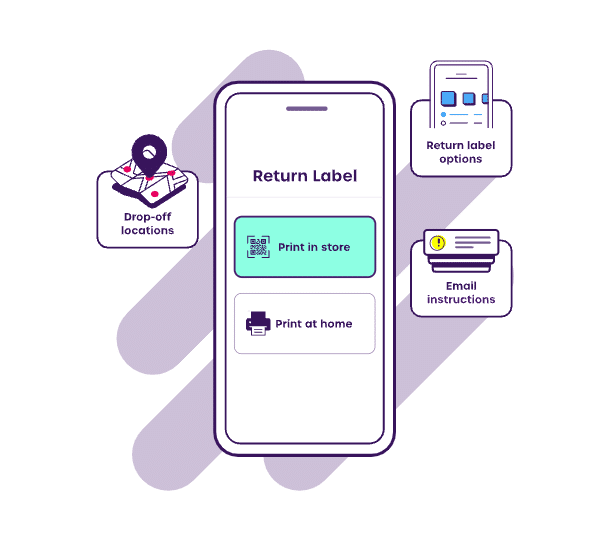Insight / Blog
Schrödinger’s Inventory: How to demystify returns

Summary: Once stock is sent to a customer, those items might be sold forever, or they might arrive back into warehouses as a return.
Erwin Schrödinger came up with his now-infamous cat partly out of frustration with the complexities of quantum physics and the apparent impossibility to know with certainty where things would be. That’s probably a relatable frustration to those who work in ecommerce! For the unfamiliar, the thought experiment involves a cat in a box and a complicated setup that could potentially kill the cat at any moment. The problem is that you would not know if the cat was dead or alive until you opened the box, so (according to quantum physicists) until the box is opened, the cat is both dead and alive.
Now, while most inventory sold online doesn’t have a pulse (we hope!), it’s almost always in a similar situation to Schrödinger’s cat when it heads out into the world. Once stock is sent to a customer, those items might be sold forever, or they might be about to arrive back into the warehouse as a return, and you can’t know which is true until it turns up at a returns processing area.
eCommerce return rates in can be incredibly high, averaging something like 20% across categories, but some fashion retailers report up to 70%. This represents an incredible amount of inventory (and cash!) out in the ether, unchecked. Many retailers have no understanding of the status of their stock, and in that lies an opportunity for carriers to help solve returns visibility issues for retailers.
The duration of uncertainty
-
A customer buys an item. It takes up to four days to reach them.
-
They don’t have time to look at it for two days.
-
The customer is unsure and mulls their decision to keep or return for a week.
-
Take into consideration the returns window. Let’s be positive and say two weeks.
-
A quick repackage with a returns form and a peel and stick label later, the item is taken to the post office.
-
Up to seven days on, it arrives at the warehouse.
Even in the most optimistic circumstances, the timeframes would make Schrödinger wince. A single piece of inventory can be in an unknown condition for around a month. And that’s true for every single item sold.
What happens when the cat disappears completely?
This is a frequent issue when returns are simply packed, labelled and handed over. In a typical paper-based returns journey, once the item has been dropped off there’s no association between it and the customer. It’s just a box with a label. The customer is given a tracking number, yes, but humans are fallible and little bits of paper can and do go missing.
When refunds don’t arrive as expected, customers will naturally chase them and the first question a customer service representative will ask is “what’s your tracking number?” Without it, there is literally no way to find the order. A single number, or the absence thereof, leaves the retailer open to so many unnecessary costs – investigation time, dispute resolution, disappearing inventory and some refunds that may simply not be deserved. In low volume sales, this is expensive. In high volumes, it can be the difference between a business staying alive or not. At the same time, because you do not know what is happening, you cannot truly understand the extent of the problem.

It’s not just about saving the cat – we want to make it purr
Okay, so the metaphor might be stretching just a bit here, but the point is that we don’t just need to make returns less of a mystery – we want to transform them into something valuable. As simple a change as knowing that the customer intends to make a return can add a ton of value to their experience and the retailer’s profitability. Once we understand the status of a product, we can maximise its value.
In fashion, for example, products have a fluctuating value – what’s hot now, might not be hot in a month. This makes it even more critical to have timely information that might prevent items from losing their market value. Let’s take a pair of trainers, as an example. They’re a hot item when they hit the shelves, but by the time they’ve gone through the returns cycle once, they might no longer be the desirable kicks of the moment and end up being reduced in price in seasonal sales, at a factory outlet or channelled into the secondary market.
If customers book their returns through a digital platform, we know the customer intends to return the item, even before they’ve packaged it up, and we have an understanding of the return reason and expected condition of the item. Even in its absence, it virtually becomes stock again. We also have an immediate understanding of when we are likely to receive it back into the warehouse and its value to our inventory. We can, theoretically, put it back on sale before it’s even entered the building. And if it doesn’t arrive as expected, there is enough information available to claim against its loss.
It’s not quantum mechanics, just a digital workflow
The implementation of a digital returns journey pretty much sends Schrödinger and his cat packing. Because where his theory centres around the absence of information, a digital journey is the opposite. A retailer can know precisely what is being returned, when, how and why. It is absolute clarity, yes, but it is also actionable clarity.
For example, you can reward loyal customers who make returns promptly and immaculately with immediate refunds. Regular customer status updates mean less time-consuming calls, emails and messages to customer service. And the jewel in the crown is that retailers can decide how and where the item is trafficked back based on its value, making huge savings in transportation costs. With customisable rules, retailers can automatically set different locations based on item type (so the hot items get back into stores faster) or reason code (so broken and damaged items can go straight to the repair facility).
With so much at stake, one has to wonder why so much inventory is left in a state of guesswork? Even a Nobel Prize-winning physicist would struggle with that one.
Carriers to save the cat
63% of merchants say returns are a “significant” or “very significant” problem for their business, putting stress on already tight margins. For parcel carriers, postal operators and 3PLs, ecommerce returns shouldn’t simply be defined as a merchant problem. They represent a significant opportunity for logistics providers to secure growth and new parcel volume, if they can provide merchants with the solutions to help tackle returns.
To continue with the metaphor, if carriers can save the cat, they’ll be rewarded with stronger and more profitable retailer relationships.
Interested in how Doddle keeps track of stock, no matter where it is in its journey? Check out our returns platform.

Topics:
Related articles
How 3PLs Can Cut Costs, Reduce Waste and Boost Revenue With Smart Returns Management
3PLs should take advantage of returns to help reduce cost, efficiently manage warehouse resources, and aid growth.
Saving profits and the planet: 4 ways to sustainable & cost-effective returns
Returns drain profits and damage sustainability. Luckily, retailers can implement both cost-effective and sustainable returns using these 4 ways.
Speedy refunds: creating happy customers through fast & effective returns
Find out how speedy refunds can recapture revenue, increase customer loyalty and boost lifetime value.












